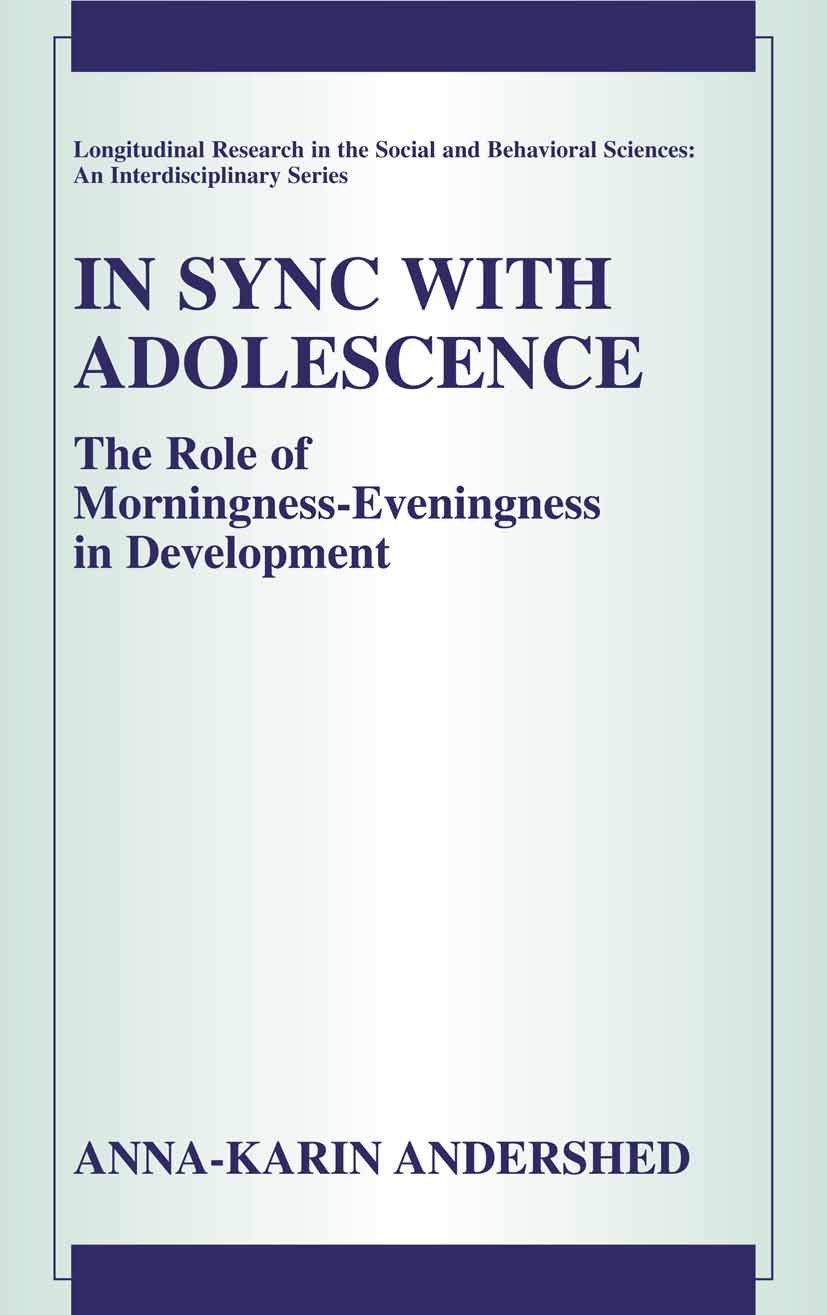| 书目名称 | In Sync with Adolescence | | 副标题 | The Role of Morningn | | 编辑 | Anna-Karin Andershed | | 视频video | http://file.papertrans.cn/464/463002/463002.mp4 | | 概述 | Basically, there are no other books on Morningness-Eveningness and development.The research on this topic, however scarce, has mainly been published as journal articles | | 丛书名称 | Longitudinal Research in the Social and Behavioral Sciences: An Interdisciplinary Series | | 图书封面 |  | | 描述 | ..At the start of every school day, it’s not an unfamiliar sight to see younger children bounding toward school, bright-eyed and bushy-tailed, ready to seize the day. In contrast, adolescents sometimes seem to sleepwalk toward their middle and high schools, often bleary-eyed, cantankerous, and less than enthusiastic to get down to work. Why the difference?...Recent developmental research has demonstrated a relationship between sleep/wake patterns and different kinds of problem behaviors, including social adjustment problems, family coercion, and disaffection from school. Adolescents who prefer staying up later in the evening and arising late in the morning (i.e., eveningness) have often been considered at greater risk of suffering from such problem behaviors as delinquency and negative relationships with parents and teachers. Those who tend to go to bed and arise earlier (i.e., morningness) have long been associated with more positive outcomes. In the majority of previous research, however, these concepts have never been adequately tested....In Sync with Adolescence: The Role of Morningness-Eveningness in Development examines the possible effects of adolescent preferences on proble | | 出版日期 | Book 2005 | | 关键词 | adolescence; behavior; development; interaction | | 版次 | 1 | | doi | https://doi.org/10.1007/b99201 | | isbn_softcover | 978-1-4899-8653-5 | | isbn_ebook | 978-0-387-23822-7Series ISSN 2945-5693 Series E-ISSN 2945-5707 | | issn_series | 2945-5693 | | copyright | Springer-Verlag US 2005 |
The information of publication is updating

|
|
 |Archiver|手机版|小黑屋|
派博传思国际
( 京公网安备110108008328)
GMT+8, 2025-11-21 09:01
|Archiver|手机版|小黑屋|
派博传思国际
( 京公网安备110108008328)
GMT+8, 2025-11-21 09:01


